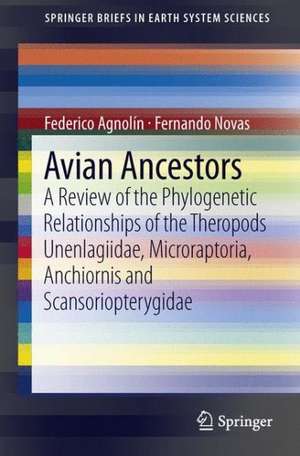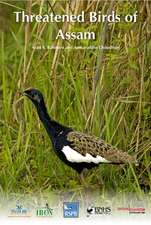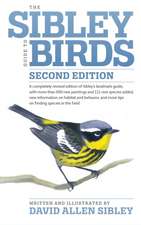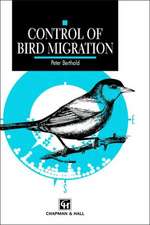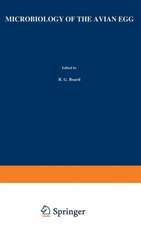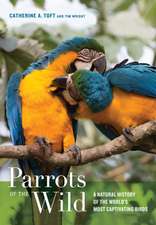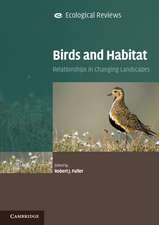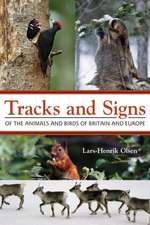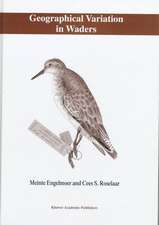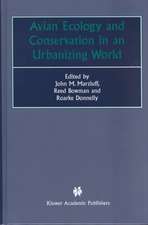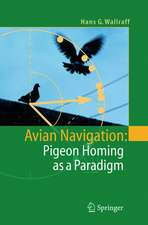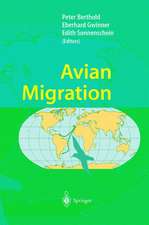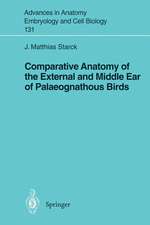Avian Ancestors: A Review of the Phylogenetic Relationships of the Theropods Unenlagiidae, Microraptoria, Anchiornis and Scansoriopterygidae: SpringerBriefs in Earth System Sciences
Autor Federico Agnolin, Fernando E. Novasen Limba Engleză Paperback – 15 mar 2013
Din seria SpringerBriefs in Earth System Sciences
-
 Preț: 379.09 lei
Preț: 379.09 lei -
 Preț: 260.95 lei
Preț: 260.95 lei -
 Preț: 424.71 lei
Preț: 424.71 lei -
 Preț: 378.54 lei
Preț: 378.54 lei -
 Preț: 380.07 lei
Preț: 380.07 lei -
 Preț: 376.22 lei
Preț: 376.22 lei -
 Preț: 377.57 lei
Preț: 377.57 lei -
 Preț: 379.48 lei
Preț: 379.48 lei -
 Preț: 379.09 lei
Preț: 379.09 lei -
 Preț: 377.35 lei
Preț: 377.35 lei -
 Preț: 379.09 lei
Preț: 379.09 lei -
 Preț: 259.57 lei
Preț: 259.57 lei -
 Preț: 376.80 lei
Preț: 376.80 lei -
 Preț: 377.73 lei
Preț: 377.73 lei -
 Preț: 379.86 lei
Preț: 379.86 lei -
 Preț: 381.00 lei
Preț: 381.00 lei -
 Preț: 140.77 lei
Preț: 140.77 lei -
 Preț: 380.07 lei
Preț: 380.07 lei -
 Preț: 262.47 lei
Preț: 262.47 lei -
 Preț: 377.18 lei
Preț: 377.18 lei -
 Preț: 260.56 lei
Preț: 260.56 lei -
 Preț: 376.22 lei
Preț: 376.22 lei -
 Preț: 348.79 lei
Preț: 348.79 lei -
 Preț: 378.12 lei
Preț: 378.12 lei -
 Preț: 379.09 lei
Preț: 379.09 lei -
 Preț: 376.59 lei
Preț: 376.59 lei -
 Preț: 375.23 lei
Preț: 375.23 lei -
 Preț: 376.04 lei
Preț: 376.04 lei -
 Preț: 380.07 lei
Preț: 380.07 lei -
 Preț: 443.58 lei
Preț: 443.58 lei -
 Preț: 384.48 lei
Preț: 384.48 lei -
 Preț: 377.95 lei
Preț: 377.95 lei -
 Preț: 376.59 lei
Preț: 376.59 lei -
 Preț: 350.18 lei
Preț: 350.18 lei -
 Preț: 379.68 lei
Preț: 379.68 lei -
 Preț: 378.71 lei
Preț: 378.71 lei -
 Preț: 378.12 lei
Preț: 378.12 lei -
 Preț: 376.96 lei
Preț: 376.96 lei -
 Preț: 377.35 lei
Preț: 377.35 lei -
 Preț: 374.30 lei
Preț: 374.30 lei -
 Preț: 377.73 lei
Preț: 377.73 lei -
 Preț: 378.34 lei
Preț: 378.34 lei -
 Preț: 378.54 lei
Preț: 378.54 lei -
 Preț: 412.89 lei
Preț: 412.89 lei -
 Preț: 375.62 lei
Preț: 375.62 lei -
 Preț: 341.97 lei
Preț: 341.97 lei -
 Preț: 379.09 lei
Preț: 379.09 lei -
 Preț: 375.23 lei
Preț: 375.23 lei -
 Preț: 377.35 lei
Preț: 377.35 lei
Preț: 377.18 lei
Nou
Puncte Express: 566
Preț estimativ în valută:
72.17€ • 75.36$ • 59.60£
72.17€ • 75.36$ • 59.60£
Carte tipărită la comandă
Livrare economică 15-29 aprilie
Preluare comenzi: 021 569.72.76
Specificații
ISBN-13: 9789400756366
ISBN-10: 9400756364
Pagini: 108
Ilustrații: IX, 96 p. 18 illus., 6 illus. in color.
Dimensiuni: 155 x 235 x 6 mm
Greutate: 0.16 kg
Ediția:2013
Editura: SPRINGER NETHERLANDS
Colecția Springer
Seria SpringerBriefs in Earth System Sciences
Locul publicării:Dordrecht, Netherlands
ISBN-10: 9400756364
Pagini: 108
Ilustrații: IX, 96 p. 18 illus., 6 illus. in color.
Dimensiuni: 155 x 235 x 6 mm
Greutate: 0.16 kg
Ediția:2013
Editura: SPRINGER NETHERLANDS
Colecția Springer
Seria SpringerBriefs in Earth System Sciences
Locul publicării:Dordrecht, Netherlands
Public țintă
ResearchCuprins
Introduction.-
Institutional abbreviations.-
Comparison: general information about the main taxa to be compared in the present paper.-
Phylogenetic analysis: review of available phylogenetic hypotheses about the origin of birds, discussing their respective logical bases and discussion of characters used for their support.-
Systematic Paleontology: systematic arrangement.-
Discussion.-
Evolution of feathers and wings among basal paravians.-
Osteological and integumental modifications related to the origin of flight.-
Body size increase and loss of flying capabilities among paravians.-
Independent origin of flying capabilities among paravians.-
Averaptoran radiation and center of origin of birds.-
Bibliography.-
Character list.
Institutional abbreviations.-
Comparison: general information about the main taxa to be compared in the present paper.-
Phylogenetic analysis: review of available phylogenetic hypotheses about the origin of birds, discussing their respective logical bases and discussion of characters used for their support.-
Systematic Paleontology: systematic arrangement.-
Discussion.-
Evolution of feathers and wings among basal paravians.-
Osteological and integumental modifications related to the origin of flight.-
Body size increase and loss of flying capabilities among paravians.-
Independent origin of flying capabilities among paravians.-
Averaptoran radiation and center of origin of birds.-
Bibliography.-
Character list.
Notă biografică
Fernando Emilio Novas is an Argentine paleontologist working for the Comparative Anatomy Department of the Bernardino Rivadavia Natural History Argentine Museum in Buenos Aires. Novas holds a PhD in Natural sciences. Working for the CONICET, he described or co-described many dinosaurs, among them Abelisaurus, Aniksosaurus, Aragosaurus, Austroraptor, Megaraptor, Neuquenraptor, Orkoraptor, Patagonykus, Unenlagia, Araucanoraptor, Skorpiovenator, Tyrannotitan, Talenkauen, and Puertasaurus, most from the Patagonia region of Argentina.
Textul de pe ultima copertă
Although consensus exists among researchers that birds evolved from coelurosaurian theropods, paleontologists still debate the identification of the group of coelurosaurians that most closely approaches the common ancestor of birds. The last 20 years witnessed the discovery of a wide array of avian-like theropods that has considerably amplified the anatomical disparity among deinonychosaurians, some of which resemble Archaeopteryx more than Deinonychus. Among these newly discovered theropods that show remarkable bird-like characteristics are the four-winged theropods Microraptor and Anchiornis, and the unenlagiids Unenlagia, Buitreraptor, and Rahonavis. A bizarre group of minute-sized coelurosaurs, the Scansoriopterygidae, also exhibits some avian similarities that lead some authors to interpret them as more closely related to birds than other dinosaurs. With the aim to explore the phylogenetic relationships of these coelurosaurians and birds, we merged recently published integrative databases, resulting in significant changes in the topological distribution of taxa within Paraves. We present evidence that Dromaeosauridae, Microraptoria, Unenlagiidae, and Anchiornis + Xiaotingia form successive sister taxa of Aves, and that the Scansoriopterygidae are basal coelurosaurians not closely related to birds. The implications in the evolutionary sequence of anatomical characters leading to birds, including the origin of flight, are also considered in light of this new phylogenetic hypothesis.
Caracteristici
Includes supplementary material: sn.pub/extras
